While most national parks are created to protect an existing landscape, wildlife or specific natural features, many of them also preserve rich deposits of fossils, whether intentionally or not.
This illustrates the importance of protecting America’s natural lands. Setting aside public lands for conservation purpose is beneficial for all flora and fauna—current, future and prehistoric.
Contents
- Go Dinosaur and Fossil Hunting in These Fascinating National Parks and Monuments
- 10 Best National Parks and Monuments With Dinosaurs and Other Fossils
- Agate Fossil Beds National Monument, Nebraska
- Badlands National Park, South Dakota
- Dinosaur National Monument, Colorado and Utah
- Florissant Fossil Beds National Monument, Colorado
- Fossil Butte National Monument, Wyoming
- Hagerman Fossil Beds National Monument, Idaho
- John Day Fossil Beds National Monument, Oregon
- Petrified Forest National Park, Arizona
- Tule Springs Fossil Beds National Monument, Nevada
- Waco Mammoth National Monument, Texas
- Other National Parks With Fossils
Go Dinosaur and Fossil Hunting in These Fascinating National Parks and Monuments
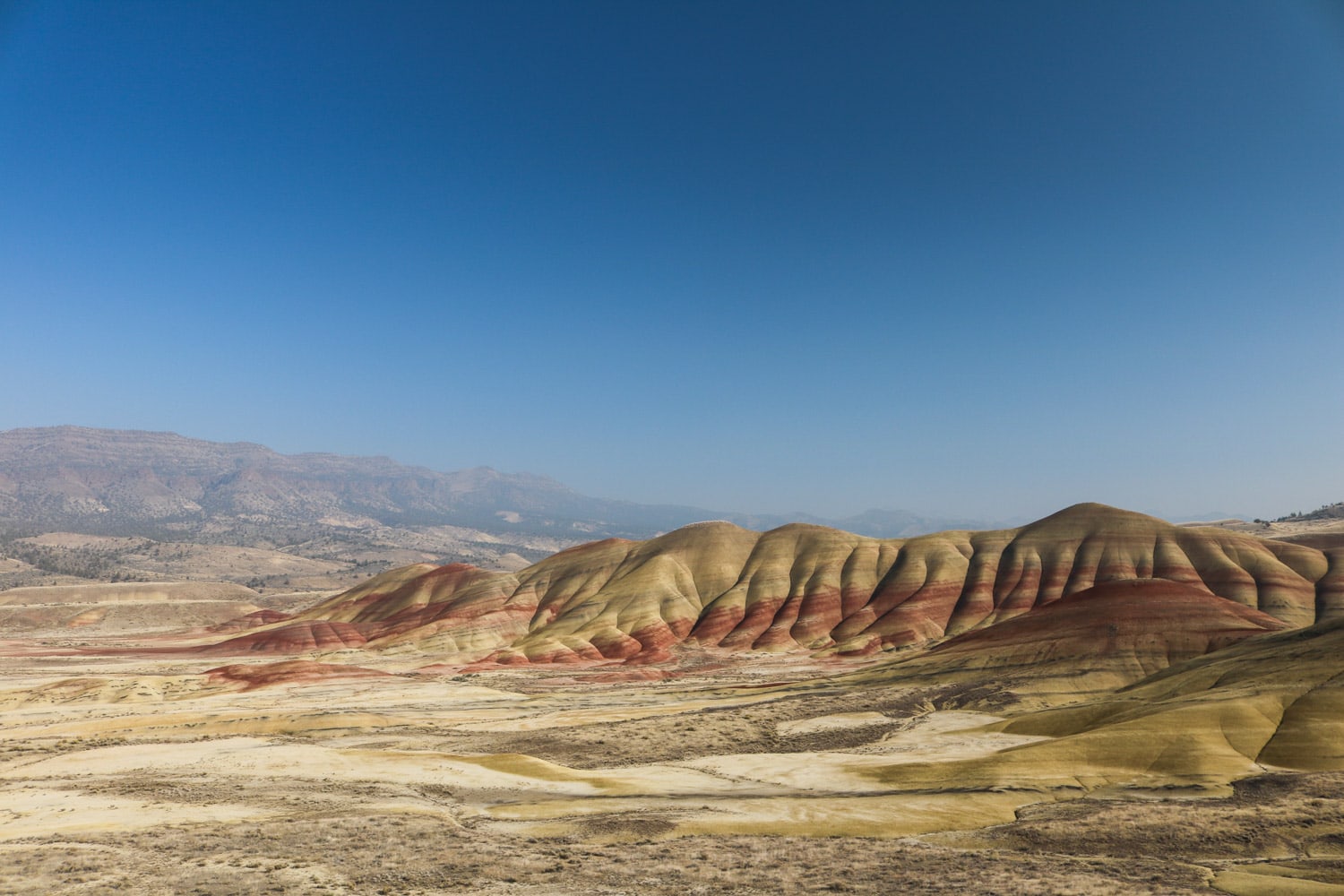
The National Park Service has a huge list of fossil parks, which contains all units where fossils are present—there are more than 250 of them. This includes fossils “in situ” (in the rocks), in museums and/or in a cultural setting.
You can see, and even find, dinosaurs and other fossils in a number of national parks, but most of these units are national monuments.
Many were established under the Antiquities Act of 1906, which authorized a U.S. president to create national monuments to protect historic landmarks, prehistoric structures, and other objects of historic or scientific interest on federal lands.
Nearly all major national parks with fossils are in the West. This is mainly because of the West’s vast open spaces, geological formations, canyons and deserts.
The specific characteristics of these landscapes have helped: (1) fossilize prehistoric plants and animals thanks to dry conditions, and (2) expose them again through natural processes like wind and water erosion.
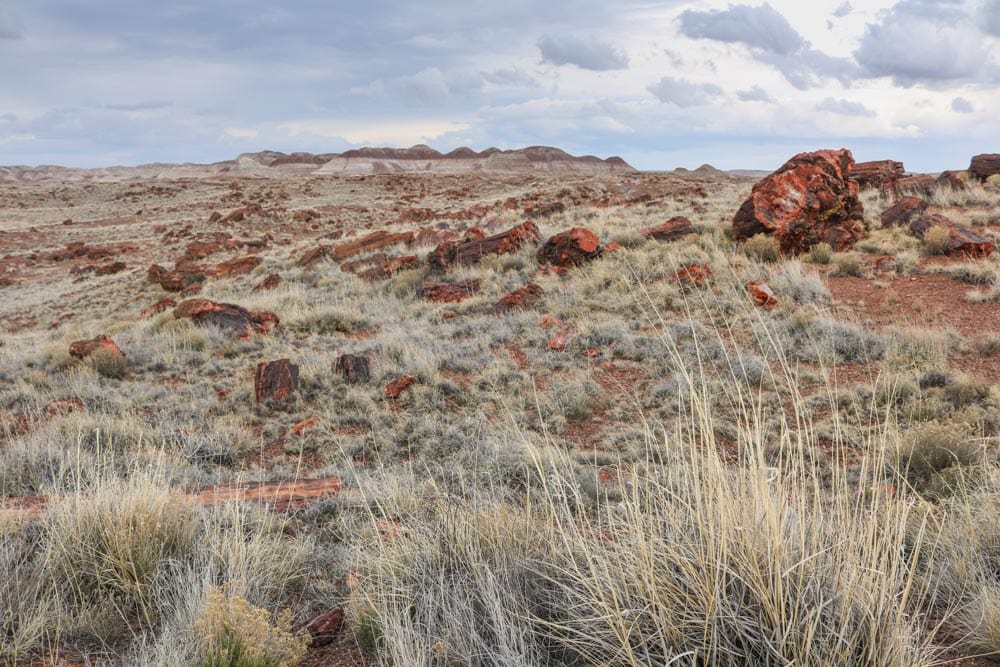
This post about national parks with fossils contains affiliate links. You can read more about our Terms of Use / Disclosure here.
10 Best National Parks and Monuments With Dinosaurs and Other Fossils
Even though there are literally hundreds of fossil national parks and monuments in the USA, that doesn’t mean they’re all equally as fascinating. When it comes to dinosaurs and other fossils, some parks are simply better than others.
If you’d like to put on your paleontology hat, learn about prehistoric fossils and maybe even look for them yourself, the following parks can’t be beat. They’re the best National Park Service sites for fossil hunting.
Agate Fossil Beds National Monument, Nebraska
Fossil highlights: Miocene Epoch mammals like Menoceras, Dinohyus and Daphoenodon
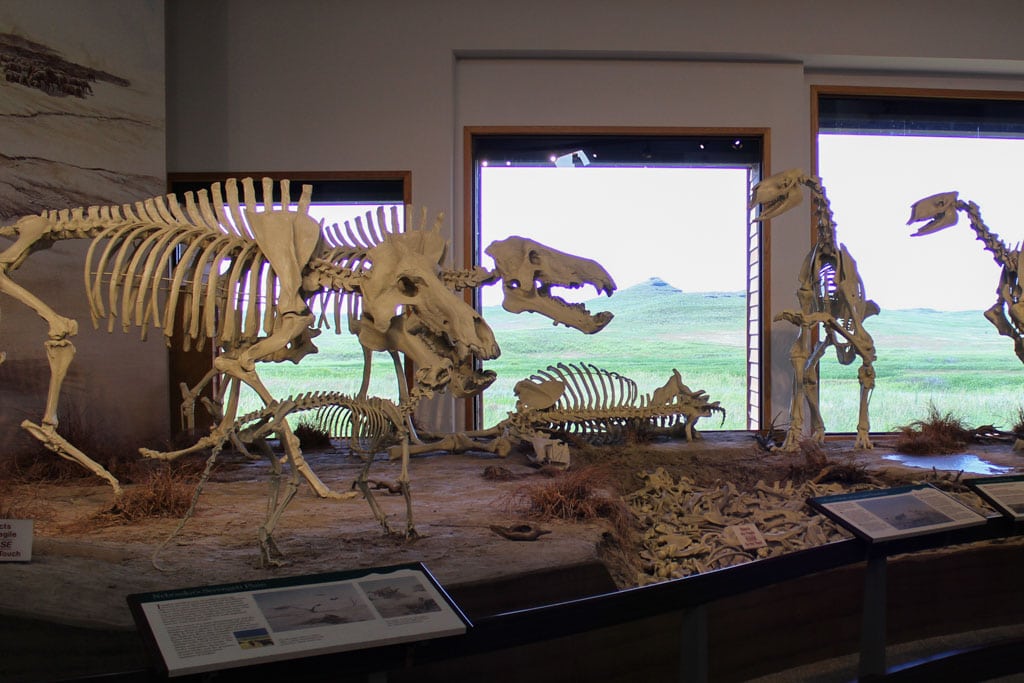
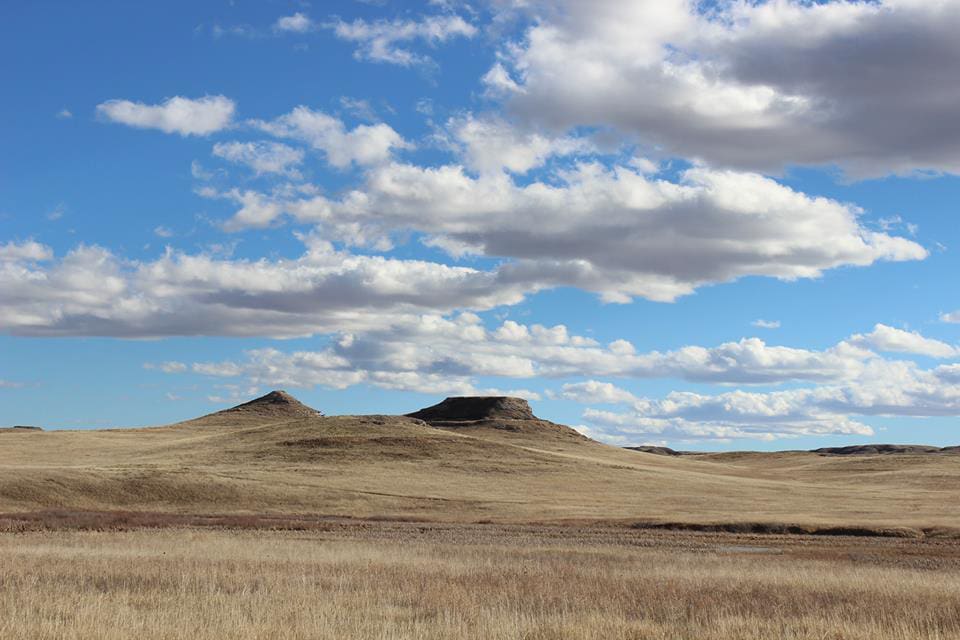
Agate Fossil Beds National Monument photo credit: NPS
Situated in northwestern Nebraska, the Agate Fossil Beds National Monument is a both a historic and continental crossroads.
It protects Miocene Epoch fossil collections, as well as Plains Indians heritage and art, and remnants of the time when explorers passed through and pioneers settled the American West.
In the 1890s, paleontologists discovered what the Lakota Sioux had known for decades—that there are incredibly rich Miocene Epoch mammal fossil sites in these hills and prairie.
Many of those fossils were found on University and Carnegie Hills, both of which rise strikingly up from the grassy plains.
The Agate Springs Ranch was originally owned by James H. Cook, who first found fossils in the nearby hills in the 1880s. He met with legendary fossil hunters O.C. Marsh and E.D. Cope, who sparked his interest in fossils even more.
He also established a decades-long friendship with the Oglala Lakota chief Red Cloud, who used to visit Agate Springs with his family and friends.
Over the years, Cook accumulated hundreds of gifts from the Oglala Lakota, including headdresses and pipes, bows and arrows, Red Cloud’s own shirt and moccasins, and Crazy Horse’s whetstone. These gifts and other Plains Indians artifacts are now on display at the James H. Cook Gallery at the visitor center.
In terms of Miocene Epoch fossils, many prehistoric animals were found here. Those include bear dogs, rhinoceros, entelodonts, camelids and land beavers.
Replicas of the many skeletons are showcased in the visitor center’s diorama, while the national monument’s two trails—the 1.6-mile Daemonelix Trail and 2.7-mile Fossil Hills Trail—lead to viewpoints of the “Great Bonebed of Agate”, fossil exhibits and dig sites.
Badlands National Park, South Dakota
Fossil highlights: Oligocene mammals, including oreodonts, nimravids and brontotheres, as well as mosasaurs
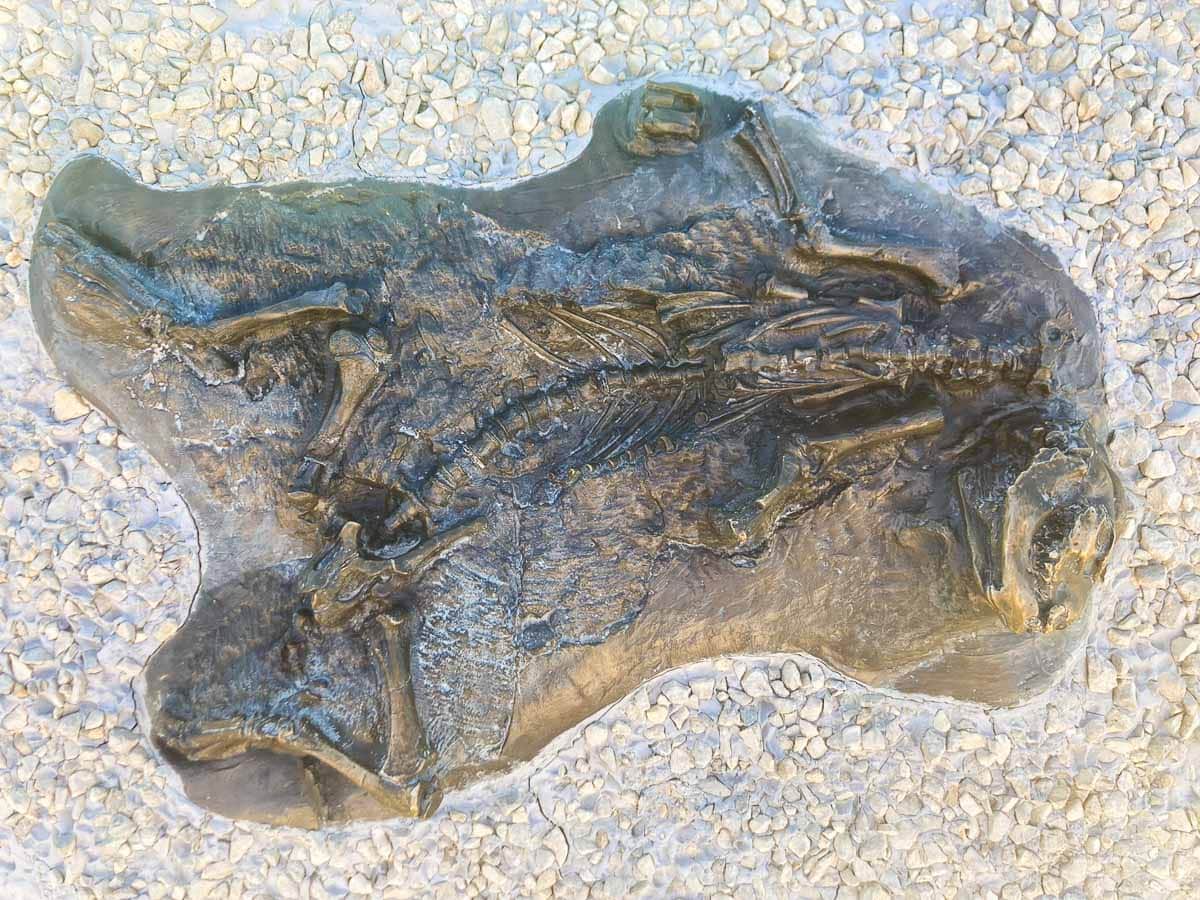
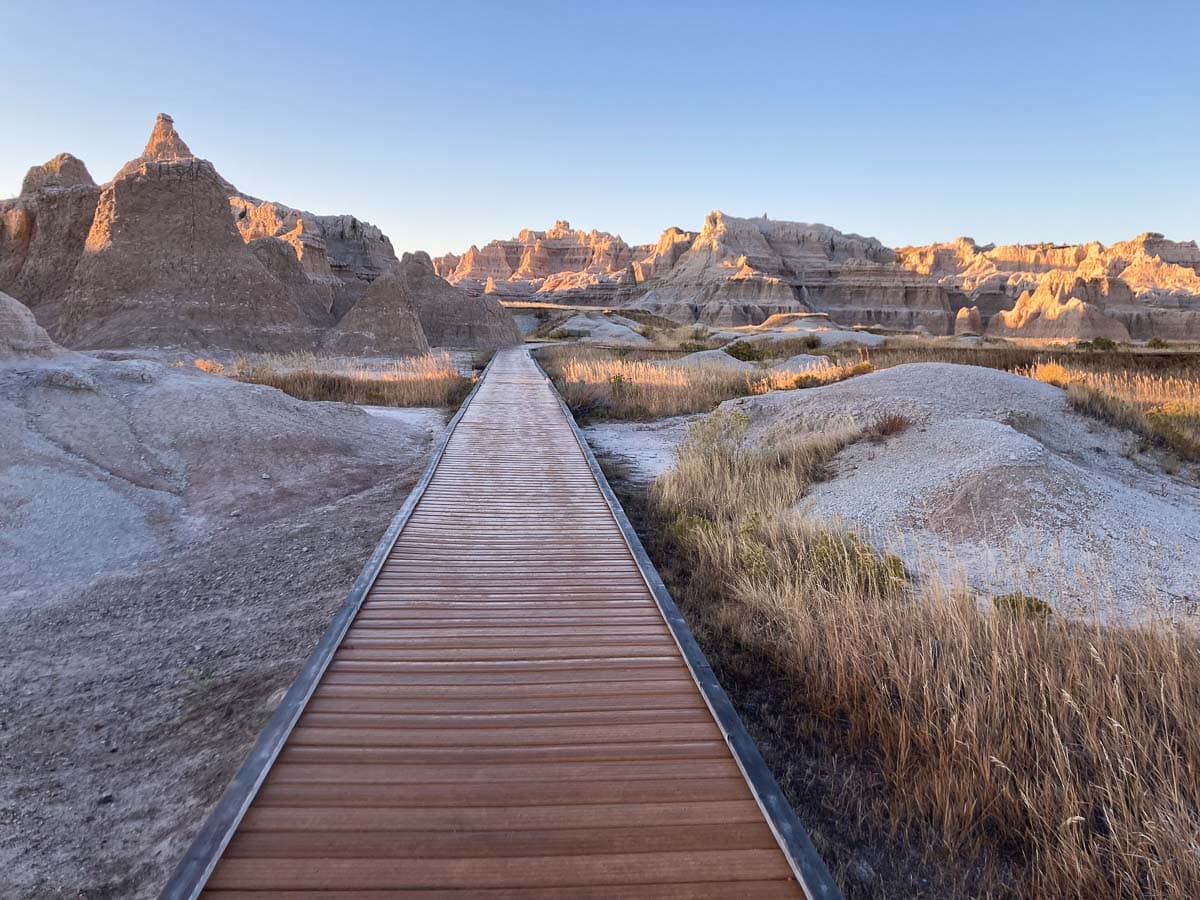
One of America’s greatest fossil hotspots, the White River Badlands in South Dakota have attracted paleontologists for nearly 200 years. And for decades before that, the Oglala Lakota people had been discovering fossilized bones and turtle shells.
Their discoveries also included fossilized seashells, which made them conclude that the area must have been underwater at some point—they were the first to realize this.
Real paleontological interest in the Badlands started in the 1830s, when traders and trappers explored the area.
By the mid-19th century, no fewer than 77 of the 84 distinct species in North America’s fossil record were discovered in the Badlands. East Coast institutions like Yale University organized expeditions to collect fossils and reassemble them in their museums.
Nowadays, the South Dakota School of Mines and Technology still has research programs in the White River Badlands almost every year. Over the years, numerous major prehistoric species have been found in Badlands National Park, from terrifying mosasaurs to oreodonts, nimravids and brontotheres.
One of the greatest excavation sites in this fossil national park, the Big Pig Dig, which is still one of the main attractions in Badlands National Park, has yielded an incredible 19,000+ fossils.
In addition to scenic driving, stargazing, hiking in the Badlands, sunrise viewing and camping, Badlands National Park offers a magnificent insight into the ancient world of North America.
You can even visit the Fossil Preparation Lab, where you can watch paleontologists work on fossils right in front of you. This is undoubtedly one of America’s greatest national parks with fossils.
Dinosaur National Monument, Colorado and Utah
Fossil highlights: Stegosaurus, Apatosaurus, Diplodocus, Allosaurus and other famous dinosaurs
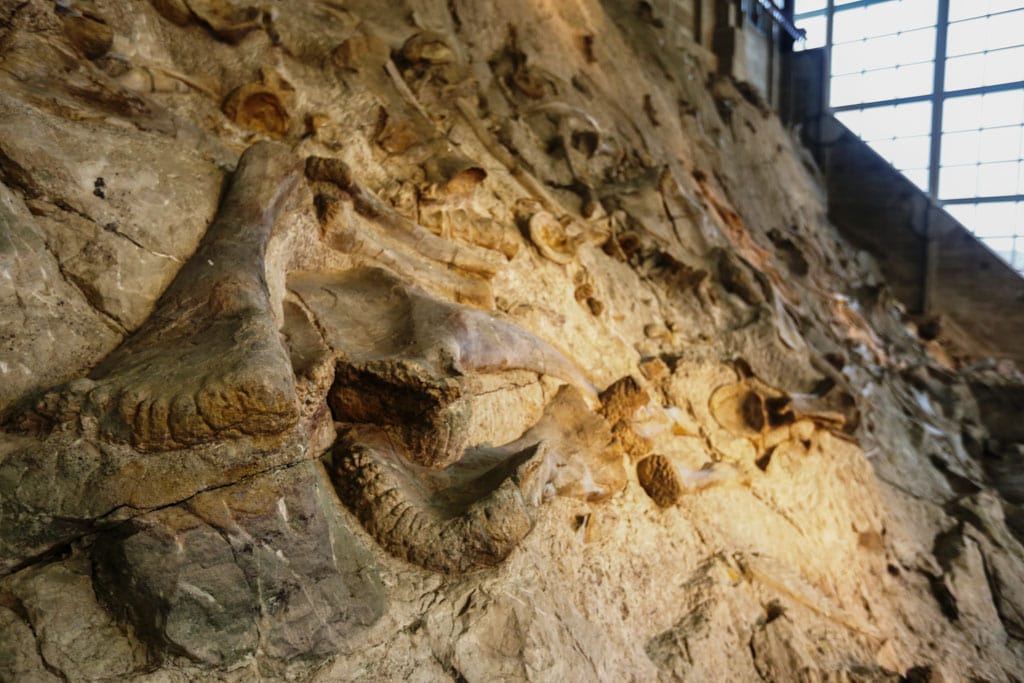
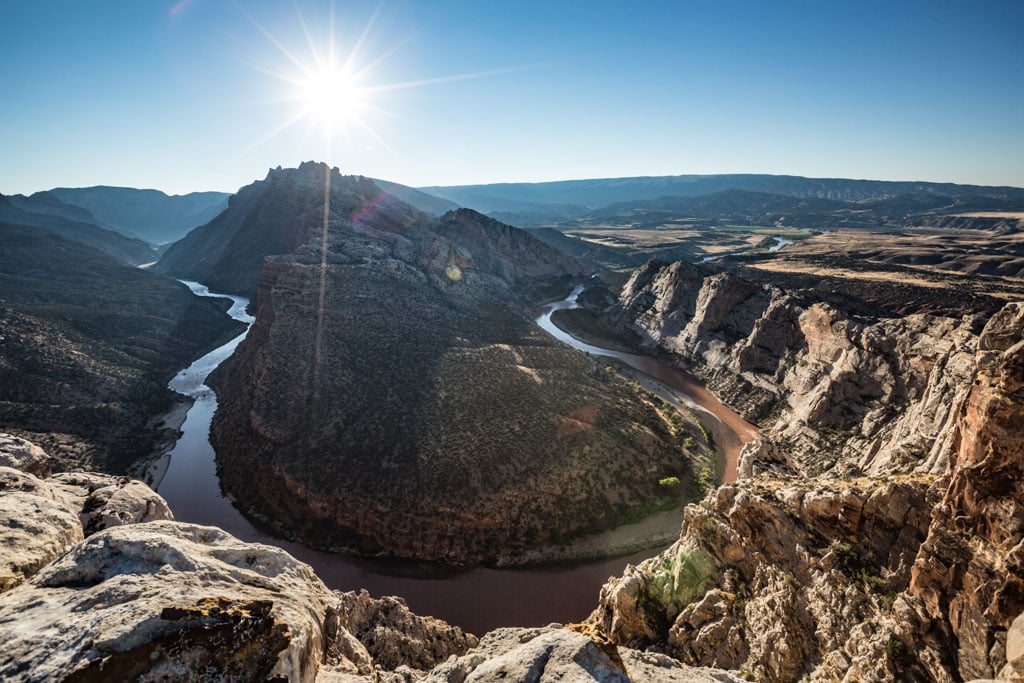
Dinosaur National Monument photo credit: NPS / Dan Johnson / Jake Holgerson
As its name suggests, Dinosaur National Monument is a fantastic place to see dinosaur fossils. In fact, it may just be the absolute best dinosaur fossil park in the United States.
Located on the border of Colorado and Utah, just over 200 miles east of Salt Lake City, where the Yampa and Green Rivers meet, this spectacular national monument encompasses river beds, breathtaking canyons and desert plains.
It was created in 1915 specifically to protect the world-famous Dinosaur Quarry, and later expanded to preserve the region’s extraordinary landscapes and natural history resources.
There are over 800 paleontological sites across the monument, which have yielded an incredible wealth of fossils. This includes such famous dinosaurs as Stegosaurus, Apatosaurus, Diplodocus, Camarasaurus, Dryosaurus and Allosaurus.
The monument’s star attraction is the Quarry Exhibit Hall, which protects the original Dinosaur Quarry.
Its Wall of Bones, which you can see from up close, contains one of the greatest collection of dinosaur fossils on the planet, including approximately 1,500 bones of all dinosaurs mentioned above and several others. On top of that, you can even touch these dinosaur bones at several locations!
In addition to dinosaur fossils, Dinosaur National Monument also contains various sets of pictographs and petroglyphs, made by the Fremont people.
Florissant Fossil Beds National Monument, Colorado
Fossil highlights: Eocene Epoch petrified trees and abundant small fossils like insects, spiders and fish
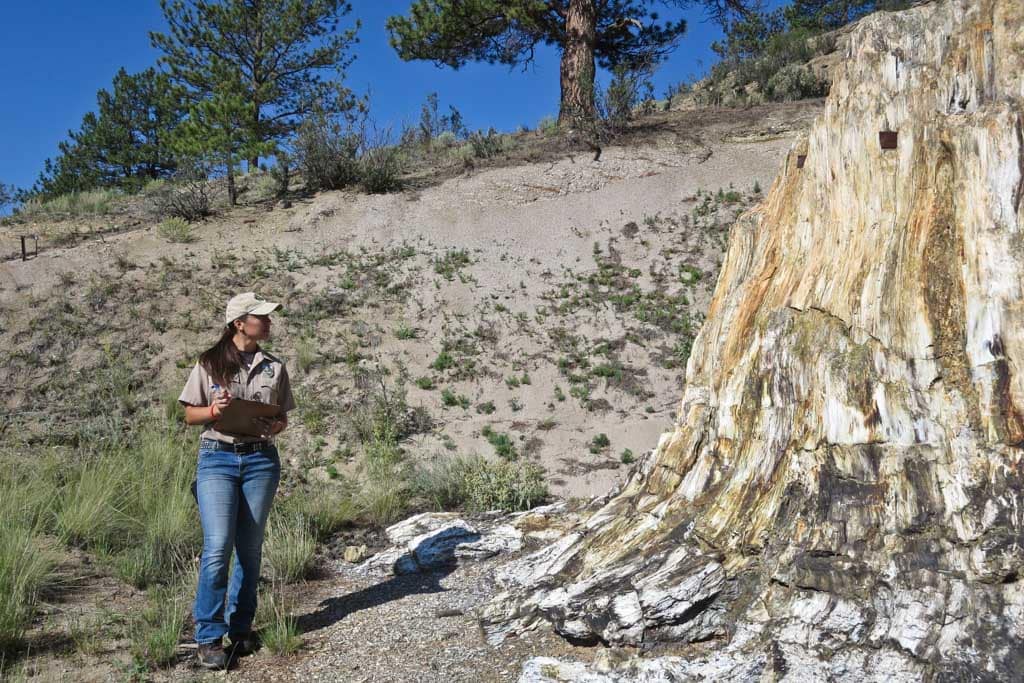
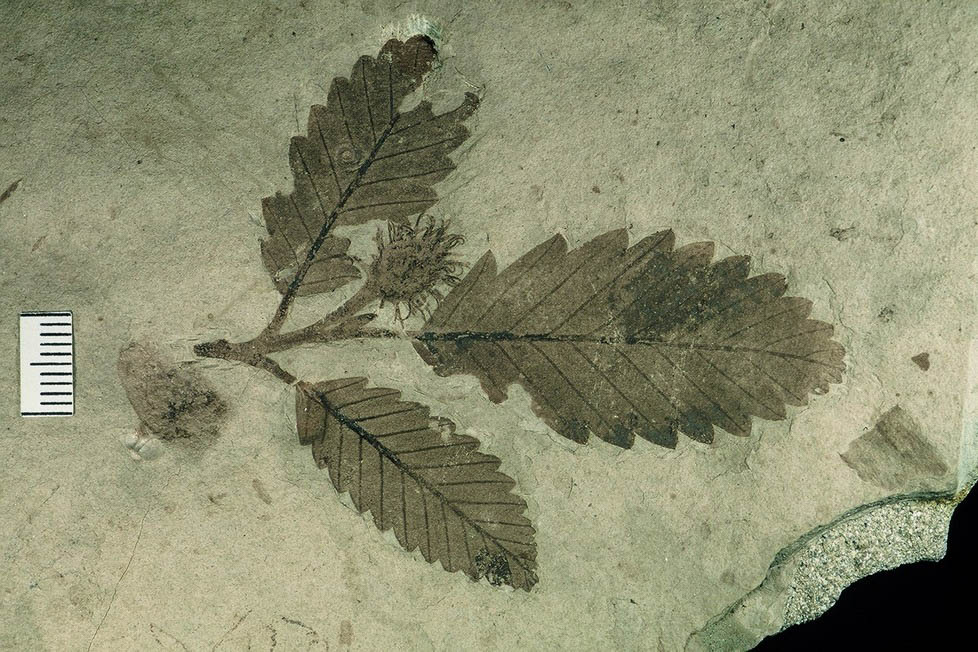
Florissant Fossil Beds National Monument photo credit: NPS
In the heart of Colorado lies one of the world’s richest Eocene fossil deposits. Hidden beneath a grassy valley, the Florissant Formation contains literally thousands of exceptionally detailed fossils of plants, insects, fish and spiders.
Additionally, the monument preserves a rich collection of petrified trees—its Petrified Forest is one of the monument’s most popular attractions. This includes massive petrified sequoia stumps up to 14 feet wide, some of the largest petrified trees on Earth.
Besides these enormous tree stumps, there are also numerous smaller tree-related fossils, such as fossilized pollen, cones, fruits, seeds and leaves.
Two short, easy-to-moderate trails allow you to explore the fossil sites of Florissant Fossil Beds National Monument—the Petrified Forest Loop and the Geological Trail—while the visitor center has exhibits and a family-friendly fossil learning lab.
The 14-minute “Shadows of the Past” orientation film is a perfect introduction to the magnificent fossil record of this central Colorado fossil park.
Fossil Butte National Monument, Wyoming
Fossil highlights: Eocene Epoch aquatic species, such as reptiles, amphibians, insects, plants and small mammals
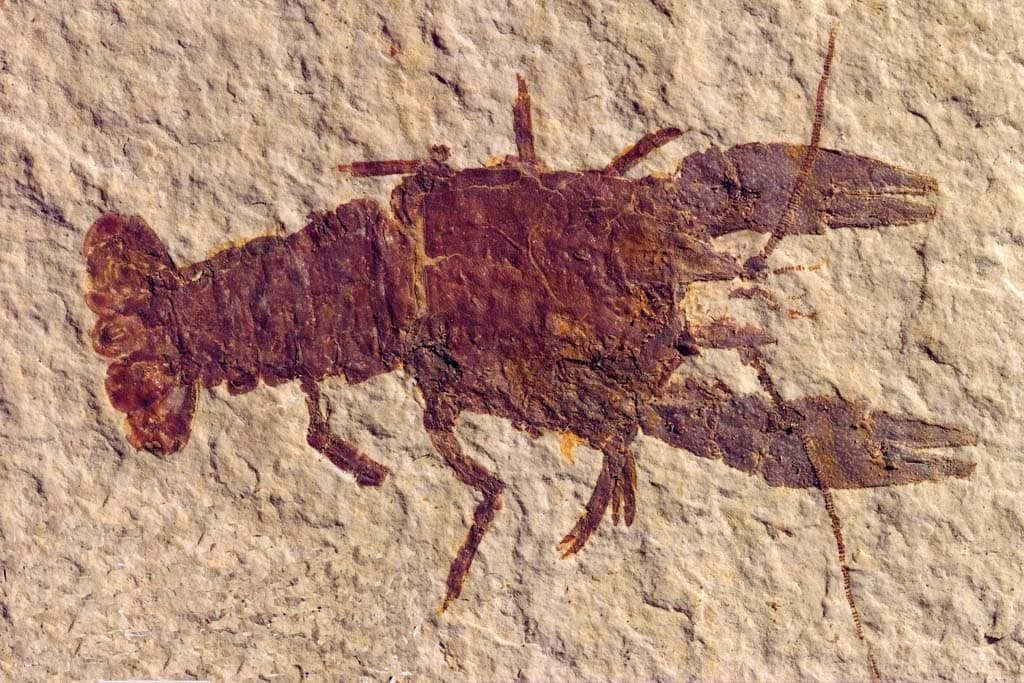
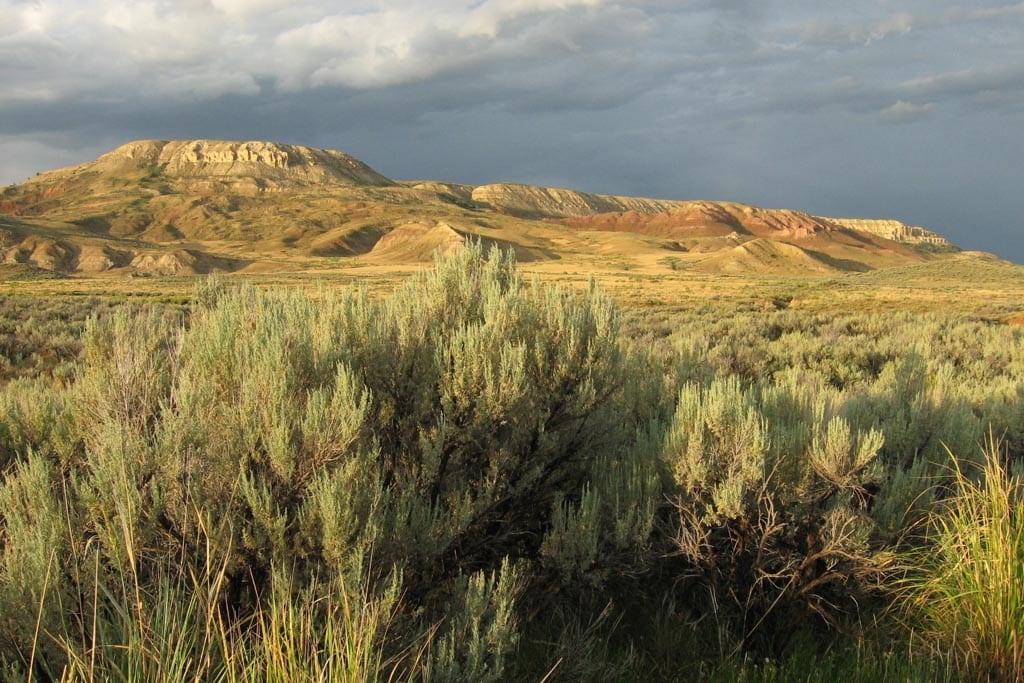
Fossil Butte National Monument photo credit: NPS / Tyra Olstad
Located in southeastern Wyoming, Fossil Butte National Monument contains an extraordinarily rich collection of fossils from the Eocene Epoch (56 to 34 million years ago).
These fossil deposits stand out for both their diversity and their quality, including several extremely delicate fossils that are rarely preserved in this excellent condition elsewhere on Earth.
The national monument preserves a small part of Fossil Lake, the smallest of three vast lakes that once covered large parts of modern-day Wyoming, Colorado and Utah. Its Green River Formation, which represents the ancient lake bed, contains North America’s—and arguably the world’s—greatest collection of aquatic fossils from the Cenozoic.
Animals that have been found here include turtles, more than two dozen fish species, bats, alligators, snakes and several insects. Its plant record is equally as impressive.
You can explore Fossil Butte National Monument on a wonderful Scenic Drive, as well as on two maintained trails: the 2.5-mile Historic Quarry Trail and the 1.5-mile Nature Trail.
The exhibits at the visitor center are fantastic, showcasing numerous fossils in separate displays like the Flowers Display, the Predator & Prey Display, the Catastrophe Display and the Bird Wall.
Hagerman Fossil Beds National Monument, Idaho
Fossil highlights: Pliocene Epoch species, particularly Hagerman horses
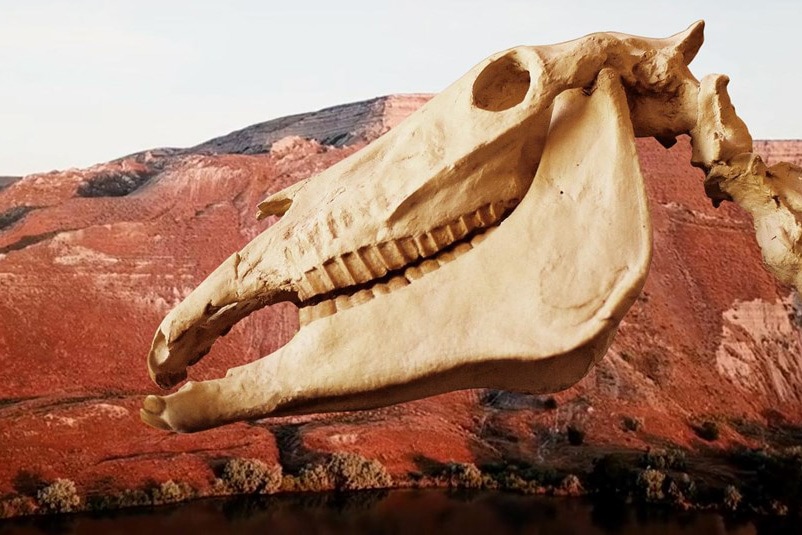
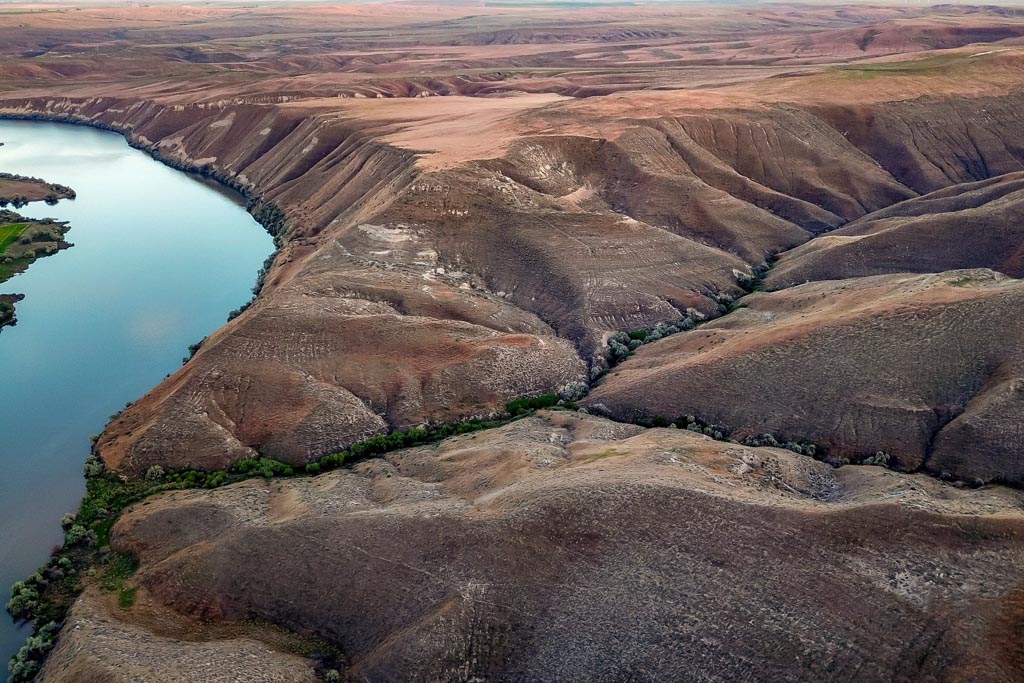
Hagerman Fossil Beds National Monument photo credit: NPS / Orange Frame
An internationally significant paleontological site, Hagerman Fossil Beds National Monument in southern Idaho preserves the world’s richest late-Pliocene Epoch fossil deposits—in quantity, quality and diversity.
Contained in an extraordinarily continuous and undisturbed stratigraphic record that spans over 500,000 years, these deposits represent the last time before the Ice Age. They also show a glimpse of the “dawn” of “modern” animals and plants.
The site is particularly famous for its Hagerman horse fossils.
Excavated in the 1930s by the Smithsonian Institution, the monument’s Hagerman horse (Equus simplicidens) fossil skeletons offer an important insight in the evolution of horses. In fact, these were the very first true one-toed horses on Earth, the ancestors of modern-day horses.
Besides fossils of ancient horses, the rock layers of Hagerman Fossil Beds National Monument have also yielded fossils from more than 200 other species. Those include famous prehistoric mammals like saber-toothed cats, ground sloths, bears, camels and mastodons, but also various frogs and giant otters.
John Day Fossil Beds National Monument, Oregon
Fossil highlights: Late-Eocene to late-Miocene Epoch plants and animals, spanning 40 million years
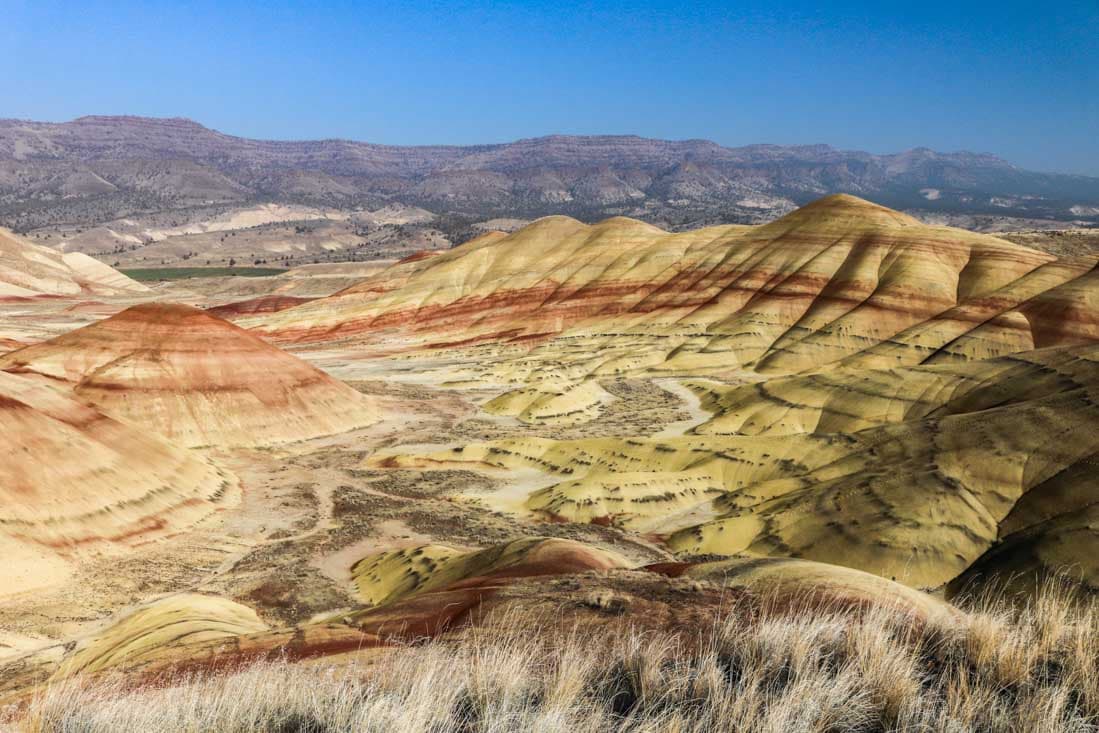
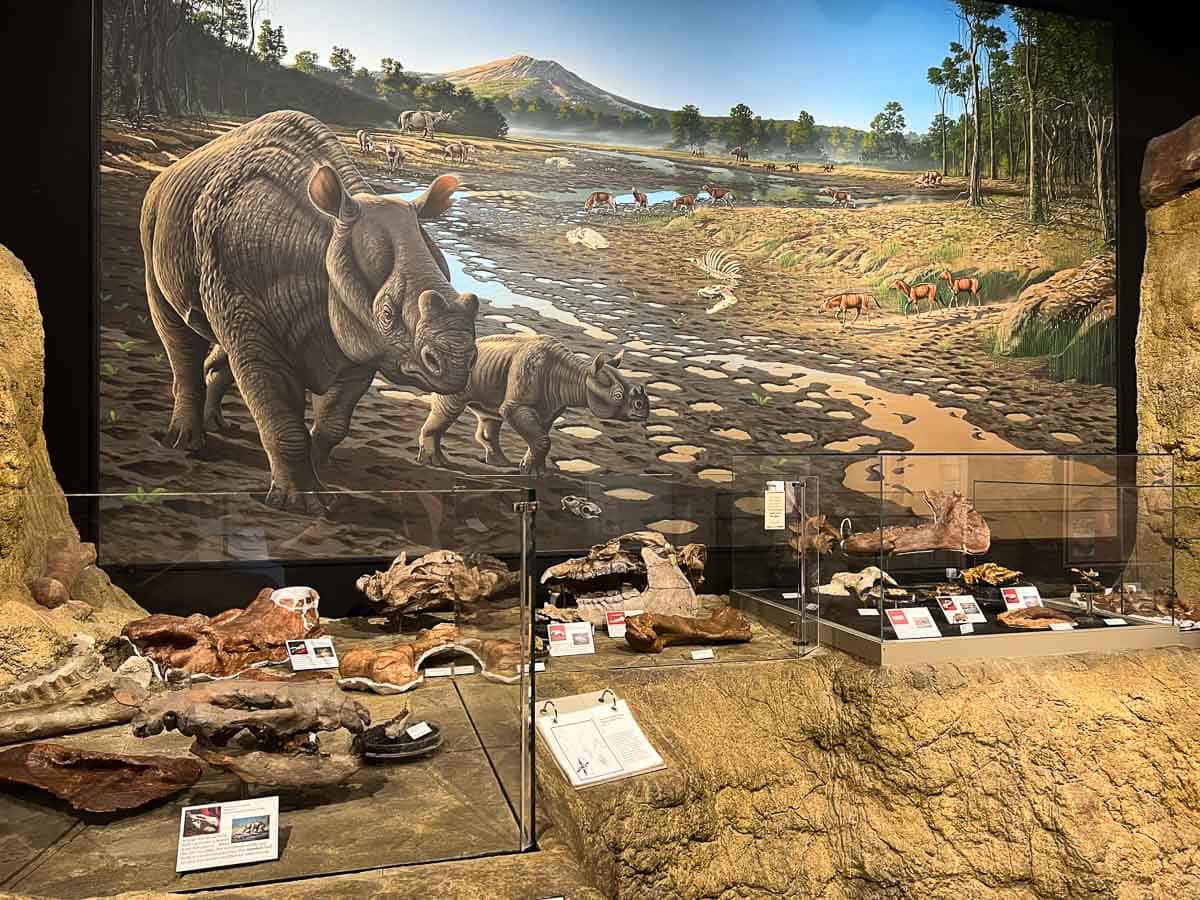
Just like Crater Lake National Park and the Columbia River Gorge, John Day Fossil Beds National Monument is one of the greatest National Park Service units in Oregon.
Located in the John Day River basin in north-central Oregon, 4.5 hours by car from Portland, this landscape of canyons and cliffs, desert plains and multi-colored badlands is spectacular.
The fossil record of the John Day Fossil Beds spans no fewer than 40 million years, from the late-Eocene to the late-Miocene, and includes fossils of countless plants and animals, as well as evidence of ancient climate change.
It effectively records the “Age of Mammals”, the evolution of North American mammals after the dinosaurs went extinct to as recently as 5 million years ago.
The most famous unit in John Day Fossil Beds National Monument is the Painted Hills Unit, which features stunning color-banded hills and is spectacular at sunrise or sunset. The monument’s two other units are the Clarno Unit and Sheep Rock Unit.
It’s home to several fossil-bearing assemblages, all of which cover a specific period in Earth’s history:
- Clarno Nut Beds (44 million years ago)
- Hancock Mammal Quarry (40 million years ago)
- Bridge Creek Flora (33 million years ago)
- Turtle Cove Assemblage (29 million years ago)
- Upper John Day Assemblage (24-20 million years ago)
- Mascall Assemblage (15 million years ago)
- Rattlesnake Assemblage (7 million years ago)
This National Park Service fossil park is unique because it contains an entire chapter in the history of the planet, telling a story of changing landscapes and life across tens of millions of years. It’s a spectacular place to visit.
Petrified Forest National Park, Arizona
Fossil highlights: Triassic petrified wood and fossilized reptiles
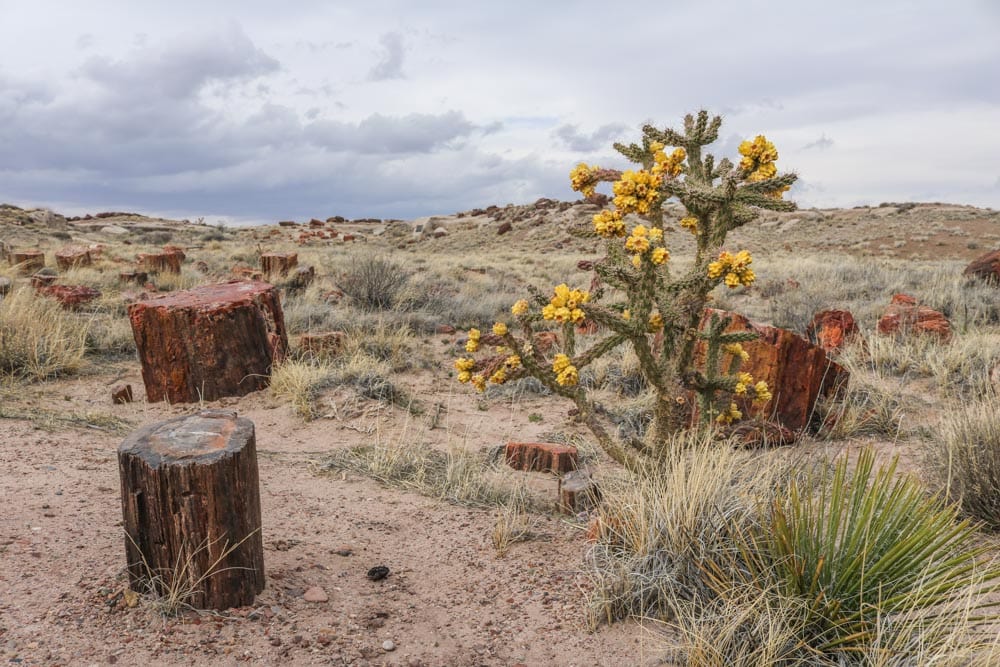
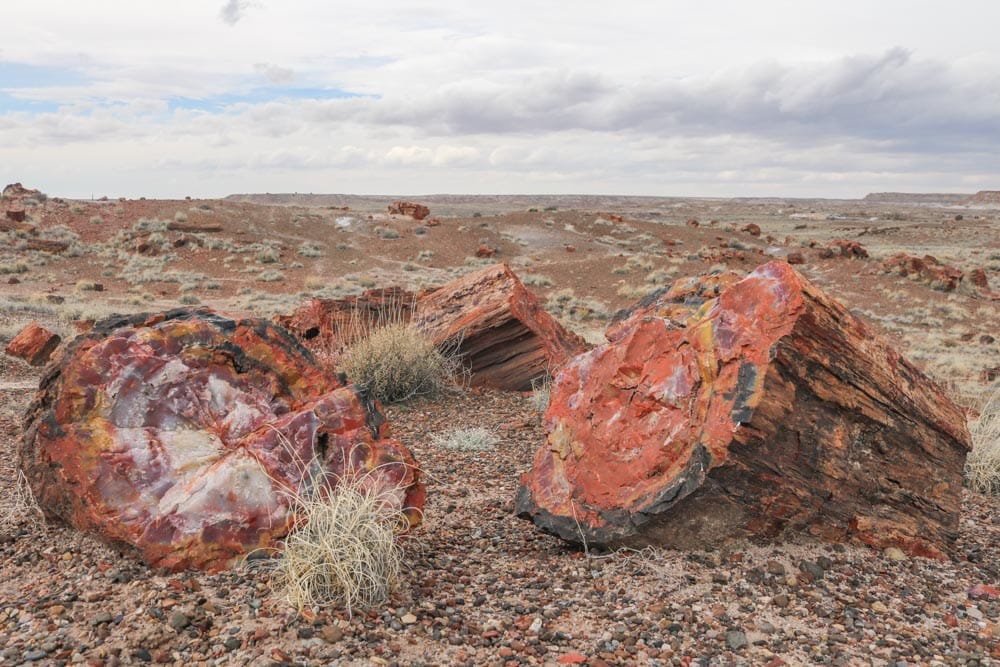
Literally named after fossils, Petrified Forest National Park is geological wonderland in northeastern Arizona.
Home to the stunning Painted Desert, the park protects one of the world’s most continuous exposed sections of Triassic rocks, which were deposited by huge rivers between 228 and 208 million years ago.
Those ancient rocks contain an amazingly diverse collection of fossils, particularly the park’s famous colorful plant and tree fossils—the “petrified forest.”
You can see an abundance of those gem-like tree fossils on various hiking trails in Petrified Forest National Park, such as the Long Logs, Giant Logs and Crystal Forest Trails.
In addition to petrified wood, the park’s rich paleontology resources also encompass a wealth of fossilized reptiles. One of Petrified Forest National Park’s main reptile groups is the Archosaurs, which includes the ancestors of ancient pterosaurs and dinosaurs, but also of modern-day crocodiles, lizards and birds.
There are many invertebrate fossils, too, including mussels, corals and snails, along with prehistoric sharks.
In addition to fossil sites, Petrified Forest also has numerous archaeological sites, from Native American ruins to fascinating rock art.
Tule Springs Fossil Beds National Monument, Nevada
Fossil highlights: Pleistocene Epoch (Ice Age) mammals like Columbian mammoths, American lions, ground sloths and camels
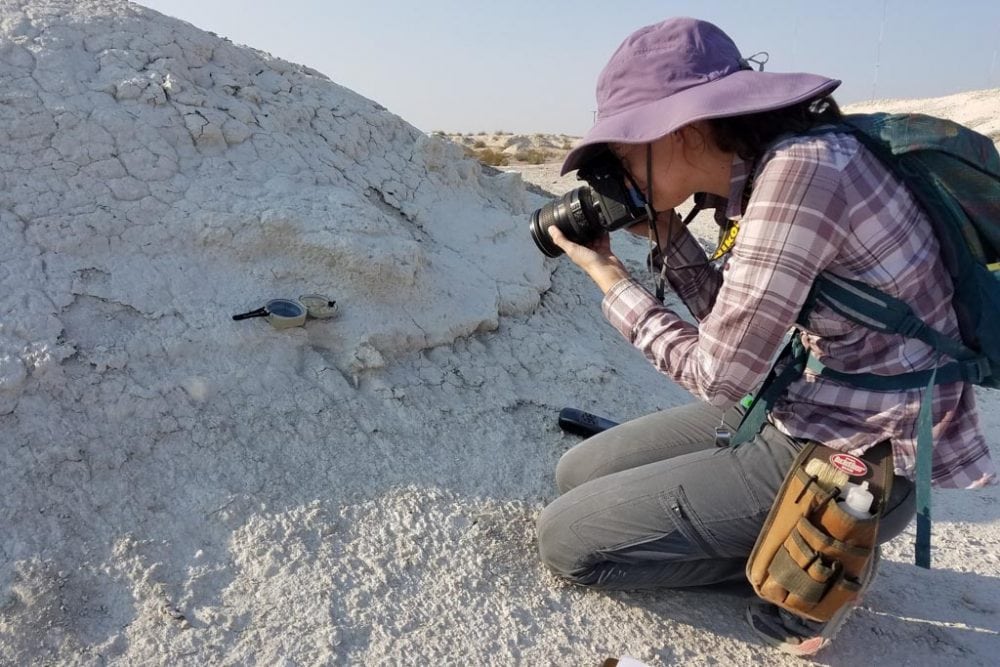
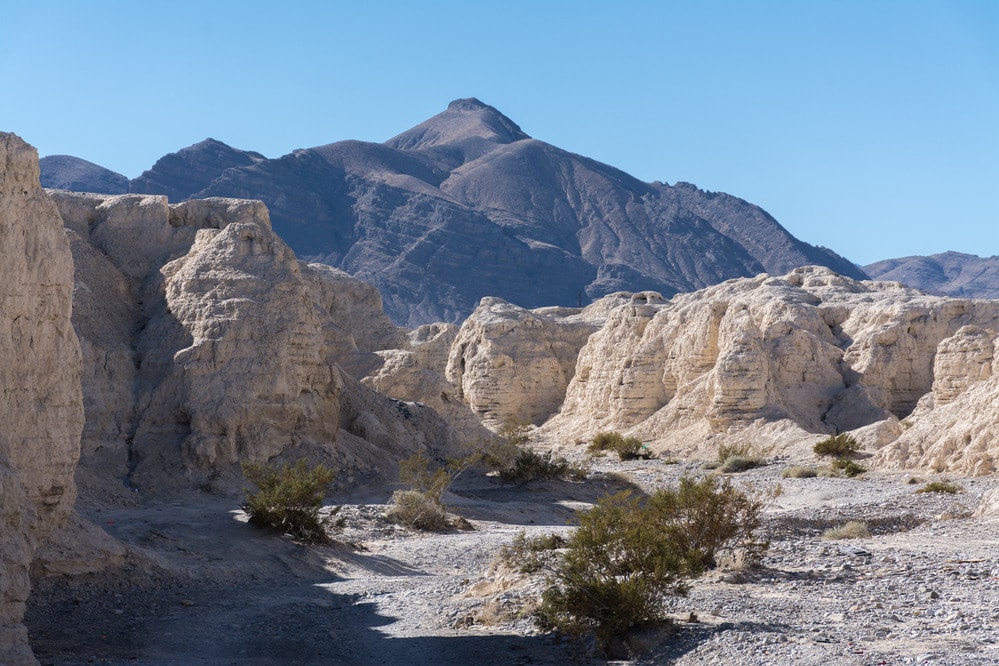
Tule Springs Fossil Beds National Monument photo credit: NPS / Andrew Cattoir
Located just north of Las Vegas, Tule Springs Fossil Beds National Monument in Nevada protects an important collection of Ice Age fossils. According to the National Park Service, it contains “the single largest and most diverse open-site assemblage of vertebrate fossils from the end of the Pleistocene Epoch in the Mojave Desert and southern Great Basin.”
A great day trip from Las Vegas, this national monument is where the fossilized remains of many iconic Ice Age mammals were found, from Columbian mammoths, camels and long-horned bison to ground sloths and giant American lions.
Interestingly, this is also the site where scientists used radiocarbon dating for the first time ever in the United States.
You can hike near the so-called “Big Dig” in the southern part of Tule Springs Fossil Beds. These long trenches excavated in 1962 contain a rich collection of large animal fossils.
You might even stumble upon a fossil yourself while walking around—just remember that you’re not allowed to move it!
Waco Mammoth National Monument, Texas
Fossil highlights: Pleistocene Epoch (Ice Age) mammals, particularly Columbian mammoths
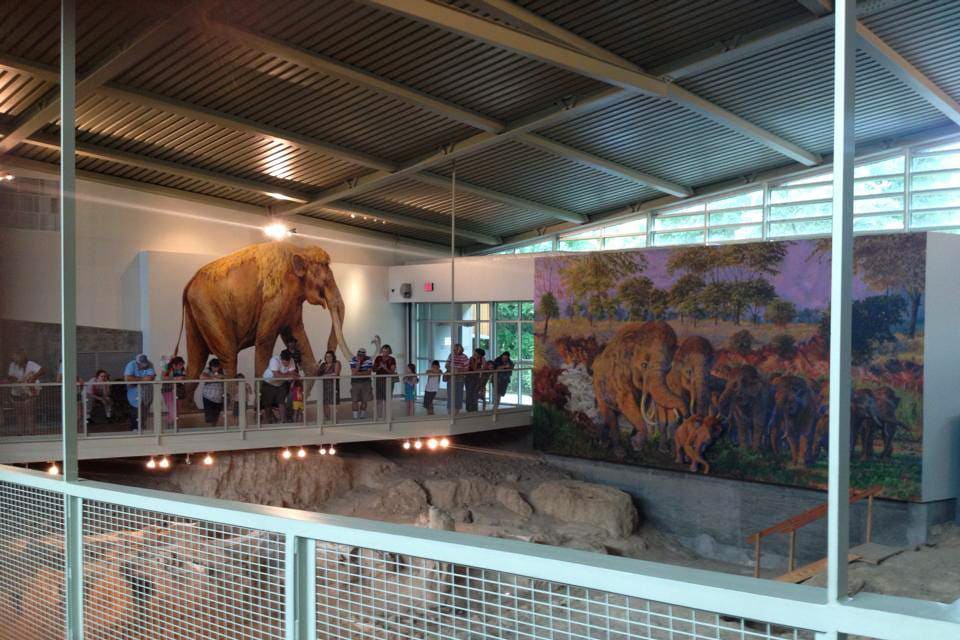
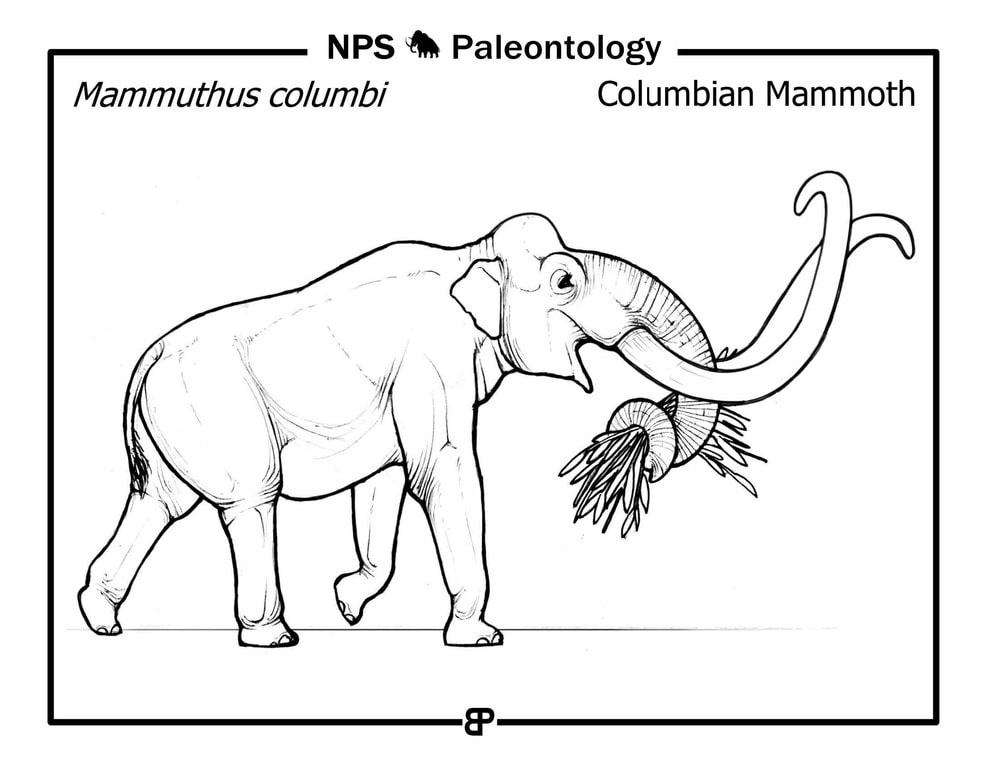
Waco Mammoth National Monument photo credit: NPS
Designated in 2015, the Waco Mammoth National Monument is home to the fossilized remains of a nursery herd of Columbian mammoths—only females and juvenile mammoths—that were surprised by a flood and drowned between 65,000 and 72,000 years ago. That flood also trapped and killed a camel.
Years later, a saber-toothed cat died and was buried there, while another flood killed several more mammoths, including a bull, females and juveniles.
This makes Waco Mammoth National Monument the largest (currently) known site where mammoths died from a reoccurring event, in this case a flood.
In addition to the camel and saber-toothed cat, fossils of an American alligator, dwarf antelope and giant tortoise have also been found there.
This national monument in Waco is one of America’s most important archaeological sites from the Pleistocene Epoch, better known as the Ice Age. It is home to America’s only evidence of a nursery herd of Columbian mammoths, which implies that they lived in matriarch-led groups.
Another thing that makes Waco Mammoth National Monument so special is that you can see a collection of “in situ” fossils, still embedded in the place where they were originally discovered. The monument contains in situ fossils of a Columbian mammoth bull, female mammoths and a camel.
Other National Parks With Fossils
- Big Bend National Park, Texas
- Channel Islands National Park, California
- Denali National Park, Alaska
- Guadalupe Mountains National Park, Texas
- Glen Canyon National Recreation Area, Arizona and Utah
- Grand Canyon National Park, Arizona
- Grand Staircase-Escalante National Monument, Utah
- White Sands National Park, New Mexico
